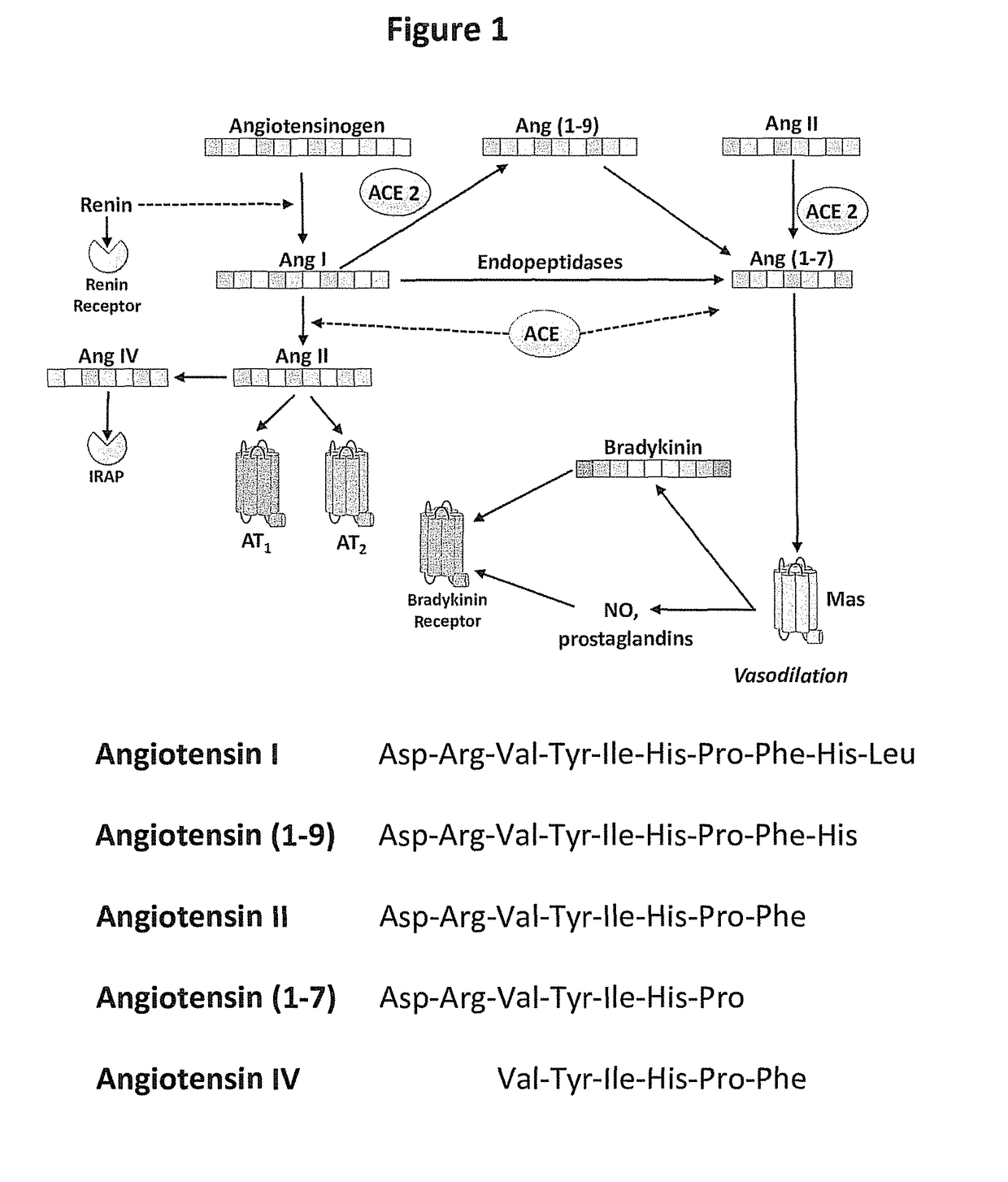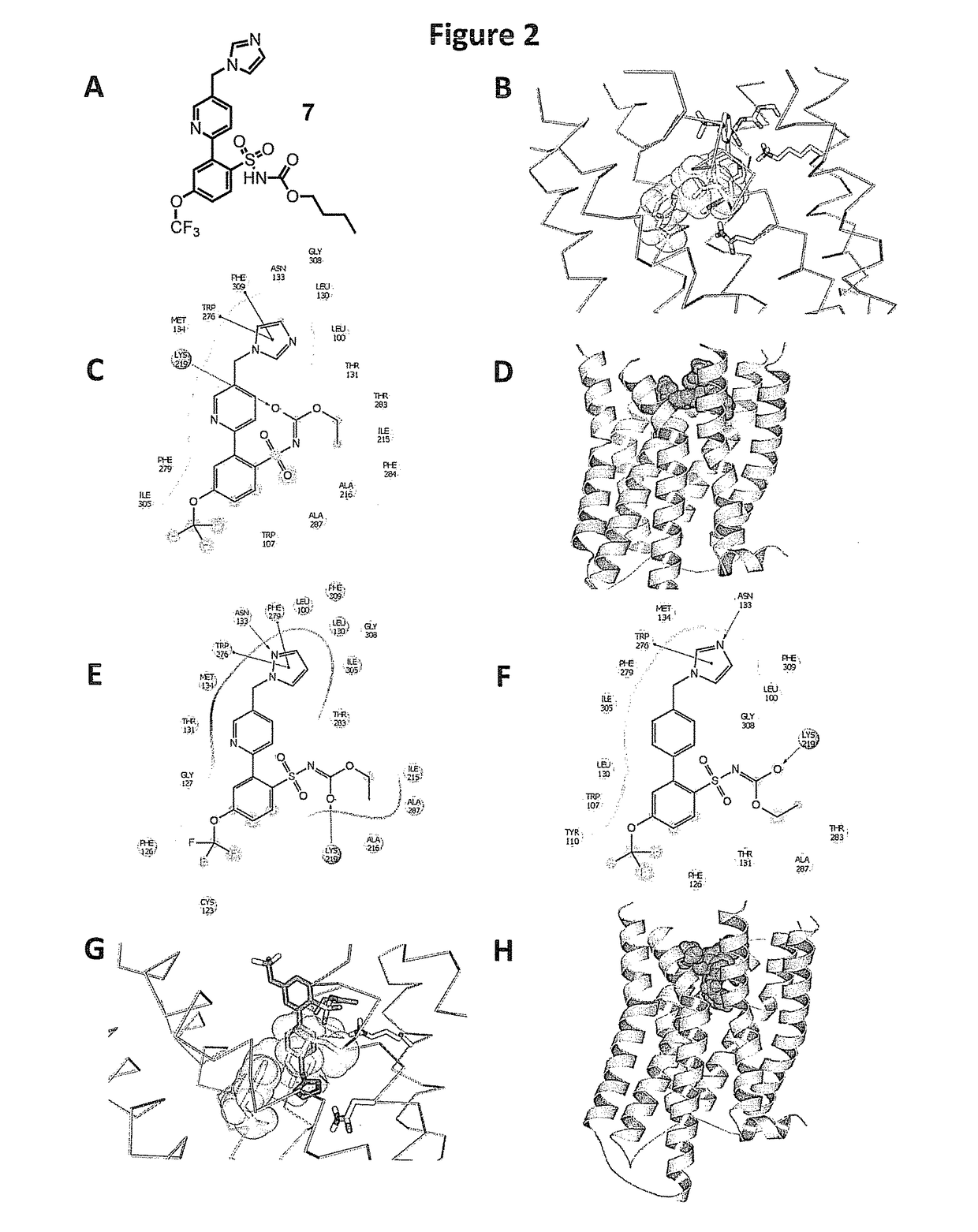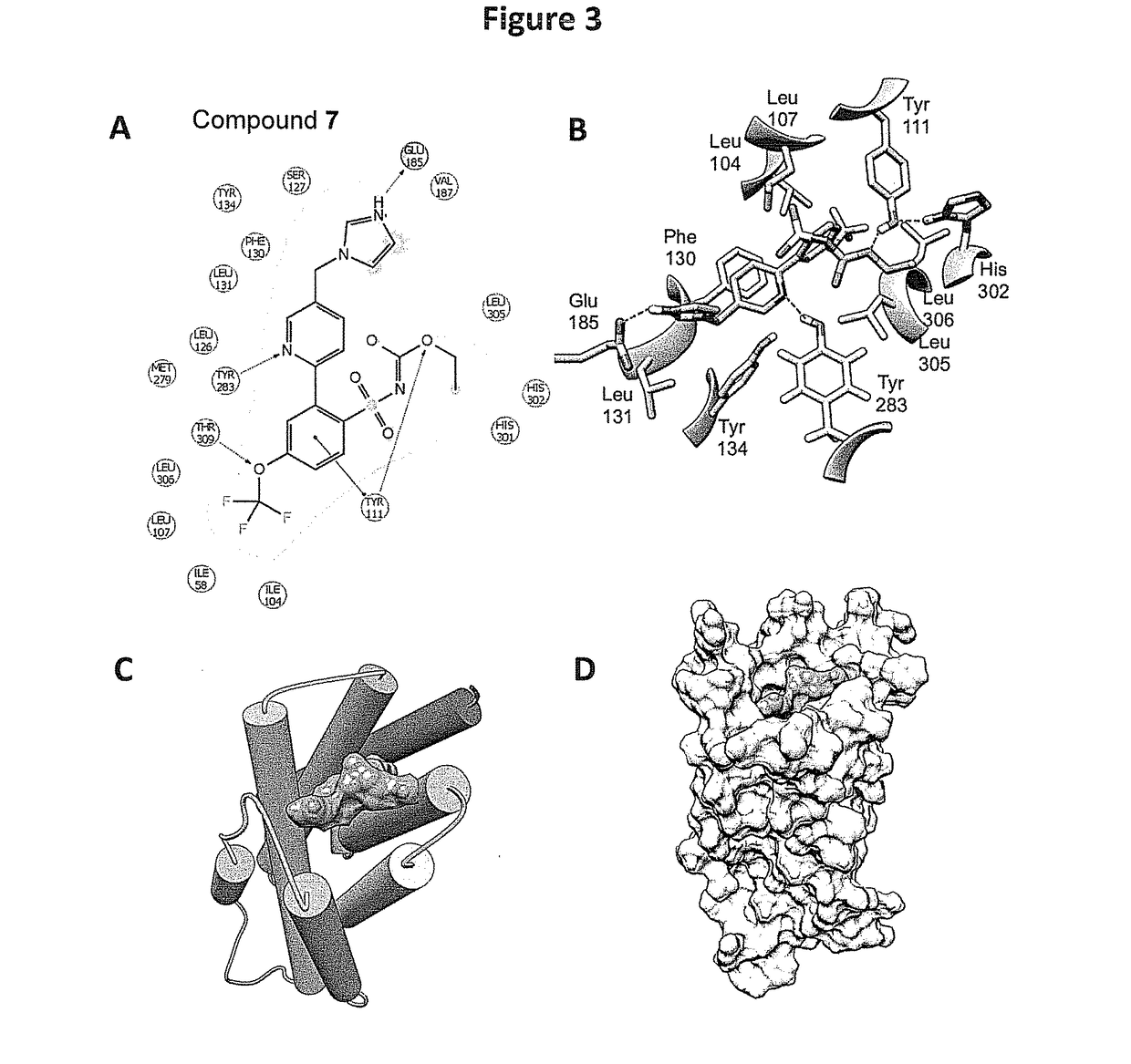Methods, compounds, and compositions for the treatment of angiotensin-related diseases
a technology of angiotensin-related diseases and compositions, applied in the field of new drugs, can solve the problems that the optimal route of daily peptide injections is not the optimal route of administration to ensure patient adherence in a chronic disease, and the similar studies to identify agonists of at2r and mas receptors have been limited
- Summary
- Abstract
- Description
- Claims
- Application Information
AI Technical Summary
Problems solved by technology
Method used
Image
Examples
example 1
[0239]Structure-Based Design and Identification of Non-Peptidic Small Molecules that Selectively Bind to the Mas Receptor
[0240]The provided compounds were designed to have beneficial agonist activity at the Mas receptor, without adverse agonist activity at the AT1 receptor. Since there are no available X-ray crystal structures for the relevant angiotensin receptors, such as the AT1, AT2 and Mas receptors, the provided compounds were defined by using GPCR homology modeling to evaluate key structural features. Homology models of these receptors were generated using the Prime (Prime, v3.1, Schrödinger, LLC, New York, N.Y.) homology workflow. The sequence of AT1, AT2, and MAS were downloaded from Universal Protein Resource (UniProt). The sequence for the AT2R and MAS receptor was aligned with the sequence of the nociceptin / orphanin FQ receptor (PDB ID: 4EA3 Chain A) in the Prime homology workflow placing gaps in the loops regions. Prime was used to construct a homology model using a kno...
example 2
[0246]Synthesis of Exemplary Compound 7(butyl(2-(5-((1H-imidazol-1-yl)methyl)pyridin-2-yl)-4-(trifluoromethoxy)phenyl)sulfonylcarbamate)
[0247]In the following synthetic examples, efforts have been made to ensure accuracy with respect to numbers used (e.g. amounts, temperature, etc.) but some experimental errors and deviations should be accounted for. Unless indicated otherwise, parts are parts by weight, molecular weight is weight average molecular weight, temperature is in degrees centigrade, and pressure is at or near atmospheric. Starting materials used in these examples are generally either commercially available or can be readily prepared from commercially available reagents by a procedure involving one or more steps.
[0248]Step 1: Synthesis of 5-((1H-imidazol-1-yl)methyl)-2-bromopyridine. The starting material 2-bromo-5-(bromomethyl)pyridine was synthesized according to a published protocol (Tetr. Lett. 2002, 43, 1697). To a stirring solution of this compound (2 g, 8 mmol) in 2...
example 3
[0254]Synthesis of Exemplary Compound 8 (butyl(2-(5-((3-methyl-2-oxoimidazolidin-1-yl)methyl)pyridin-2-yl)-4-(trifluoromethoxy)phenyl) sulfonylcarbamate).
[0255]Step 1: Synthesis of 5-((1H-imidazol-1-yl)methyl)-2-bromopyridine. The starting material 2-bromo-5-(bromomethyl)pyridine was synthesized according to a published protocol (Tetr. Lett. 2002, 43, 1697). To a 50 mL round bottom flask containing 1-methyl-2-imidazolidinone (250 mg, 2.5 mmol) and NaH 60% dispersion in mineral oil (110 mg, 2.75 mmol, 1.1 eq) at 0° C. was added 3 mL of DriSolv® DMF. The reaction turned into a cloudy white solid, then warmed to room temperature, and stirred for an hour. 2-bromo-5-(bromomethyl)pyridine (750 mg, 1.2 mmol, 3 eq) was dissolved in 1 mL of DriSolv® DMF and the reaction was stirred overnight at room temperature. The reaction was concentrated in vacuo, dissolved in EtOAc and a saturated solution of NH4Cl, and extracted. The organic layer was concentrated in vacuo, and purified by automated ch...
PUM
| Property | Measurement | Unit |
|---|---|---|
| concentration | aaaaa | aaaaa |
| body weight | aaaaa | aaaaa |
| temperature | aaaaa | aaaaa |
Abstract
Description
Claims
Application Information
 Login to view more
Login to view more - R&D Engineer
- R&D Manager
- IP Professional
- Industry Leading Data Capabilities
- Powerful AI technology
- Patent DNA Extraction
Browse by: Latest US Patents, China's latest patents, Technical Efficacy Thesaurus, Application Domain, Technology Topic.
© 2024 PatSnap. All rights reserved.Legal|Privacy policy|Modern Slavery Act Transparency Statement|Sitemap



